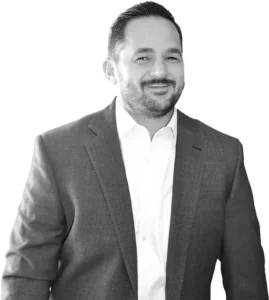Where it All Began…
I knew I wanted to be a financial advisor, but I just couldn’t figure out a way to get my foot in the door. There were not any job postings stating, “Looking for Financial Advisor, No Experience Required.” It was that chicken-or-egg problem, I needed the job to get the experience, and I needed the experience to get the job. So, I settled. I broadened my search from the specific role [financial advisor] to just getting a “resume builder” entry-level position within the finance industry. This is the backstory of why my career journey started in retail banking.
Just being honest here, I despised working at the bank. As a banker, the incentives didn’t put the client’s interest first, and the incentives were designed based on an inaccurate assumption.
Here’s my guess, at some point, research concluded that these banking customers who had more products with the bank had lower attrition rates. Another way of saying, a more engaged customer was more likely to stick around. So, an incentive plan was designed to get bankers to “sell more stuff” with the thought that this would be a profitable endeavor, both on the new product sales side and the customer retention side. Economics 101 tells us that incentives drive behavior – both good and bad – so a culture was born of bankers pitching superfluous products to clients who didn’t want, need, or even sometimes know they were sold these products. A practice that was antithetical to what you’d assume or desire from someone stewarding your finances.
Although I look back at this experience with frustration and disbelief, the fact pattern does make sense to me. Leadership thought they were rolling out a strategy to drive profitability and retention. From their research to their implementation, the intent was to drive successful outcomes for the business. In the end, this was just a classic case of confusing correlation and causation.
The Truth
It is this truth that I want to focus our discussion on today: correlation does not imply causation.
Yes, I would also assume that customers with more bank products are more likely to stay with the bank. BUT I would also assume that a client with high product engagement reflects a great relationship with the bank. It is that relationship that keeps them around. If you reshuffle that sequence and just shove a bunch of products at a customer, this does not create a great relationship. This will likely trigger the opposite outcome – the customer leaving the bank. A customer using multiple bank products and customer retention may correlate, but high product count alone isn’t the cause of retention.
We will leave this story here for now, but rest assured that many customers did leave, the CEO was asked to step down, lawsuits followed, and the press had a field day with this story.
Buyer Beware
Let’s stick with that truth that we just learned, that correlation does not imply causation. We see how a simply missed assumption led to a very unfortunate chain of events and how a group of intelligent/experienced leaders led many astray. The wreckage left behind was all collateral damage of misinterpreting causation.
Investors are concerned about low-interest rates and high stock valuations in today’s world, so there’s an elevated appetite for alternative investments. A desire to source returns from investments that are not directly correlated with the stock and bond market. Herein lies my concern because where there is customer appetite/desire, you will find a marketing team ready to package a solution and a salesperson lurking to make a pitch.
A Quick History…
Much of the popularity of alternatives was spawned by the adoption and success of institutional investors – think pensions, endowments, etc. Folks like the late David Swensen, former CIO of the Yale Endowment, built an amazing track record with a portfolio heavily weighted in alternative investments.
I don’t know if he coined the term, but David Swensen was the first investor I heard reference this idea of an “Illiquidity Premium.” Now, if you know me well, you know I try my hardest to avoid uncommon financial lingo. If there is a substitute word or analogy, I’m all in on making finance more understandable to people that may not have all the vocabulary. So, in that spirit, this term illiquidity premium simply refers to the idea that there may be an additional reward (return) associated with investments that are not as easy to sell.
Due Diligence
Hmmm… that is not an intuitive concept, so let’s break it down a bit further. I hope to illustrate that being “illiquid” and generating a “premium” may correlate, but being illiquid is not the cause of generating a premium. This seems like a small and insignificant difference, but you must know this difference as an investor. Why? Because there is an army of marketing and salespeople ready to present you with a million and one different illiquid investments. Their pitch will be that the illiquid nature of their product is what will bring you blissful outcomes. You will be presented with everything from micro-ownership in a classic car to farmland and everything in between. Now, some of these investments may be great investments, but you must ask the question – what feature will drive the premium return that I am seeking?
Author’s Note: I have somewhere in the range of 20% of my personal portfolio in alternative investments, and this is why I believe so strongly that the due diligence process needs to be robust. The alternative space is full of the good, the bad, and the ugly, so knowing what questions to ask and being selective is key.
Now, let’s dig a little deep into some alternative examples to further my point…
Private Equity is an illiquid investment, but it is not the illiquidity that creates the premium. Historically, on average, private companies have sold at lower multiples (price-to-earnings) than your average public company. Meaning you pay fewer dollars in the purchase price than the profits that this particular company generates. And what’s the best predictor of future returns? The starting valuation of your investment. Typically a lower valuation at purchase correlates with higher future expected returns.
What else is a common feature of private Equity? Leverage. So, I would submit to you that bargain valuations and leverage generate premium returns. Could you argue that those valuations are attractive because of the illiquid nature of these private markets? Sure, but my point stands that illiquidity is a feature of Private Equity but not the cause for historically superior returns.
Hedge Funds are typically illiquid, but it is not the illiquidity that creates the premium. What is the common theme of the hardest to access funds with the most prolonged lock-up periods? Impressive and persistent results over a long time period. It’s manager skill. The manager skill, the results generated, the risk management prudence, and the persistent outcomes lead to these strategies being illiquid. The managers are in the driver’s seat, they get to choose whom they want to work with, and they set safety nets and gates around the capital they steward, which allows them to do their job to the best of their ability
A Feature Not a Bug
Sometimes people can see illiquidity as a bug or a downside to a potential investment. Yes, it’s definitely an additional consideration and risk factor when investing in a less liquid investment, but have you considered how this feature might also protect you as an investor? Protect you from who? Yourself! We are emotional beings, and these emotions lead us to make knee-jerk decisions that we often regret. One edge that we have as investors that we don’t often realize, or flex, is our time horizon. We don’t have to be the smartest guy or gal in the room, and we don’t have to have insider information; sometimes, our greatest investor superpower is our ability to be patient and stay invested.
Connecting the Dots
The bank will not retain customers by tricking them into more financial products. Strong relationships cause retention.
Illiquidity does not always lead to superior returns (a premium). Each investment has its own features and benefits that may create illiquidity, and it is those details that can potentially generate a premium—the details matter.
Again, to summarize, correlation does not imply causation.







